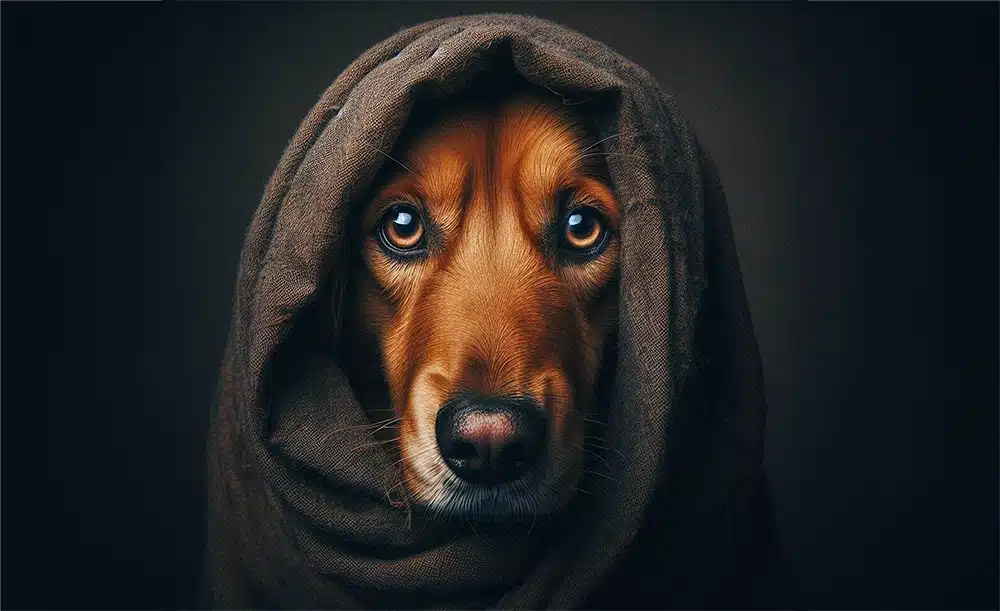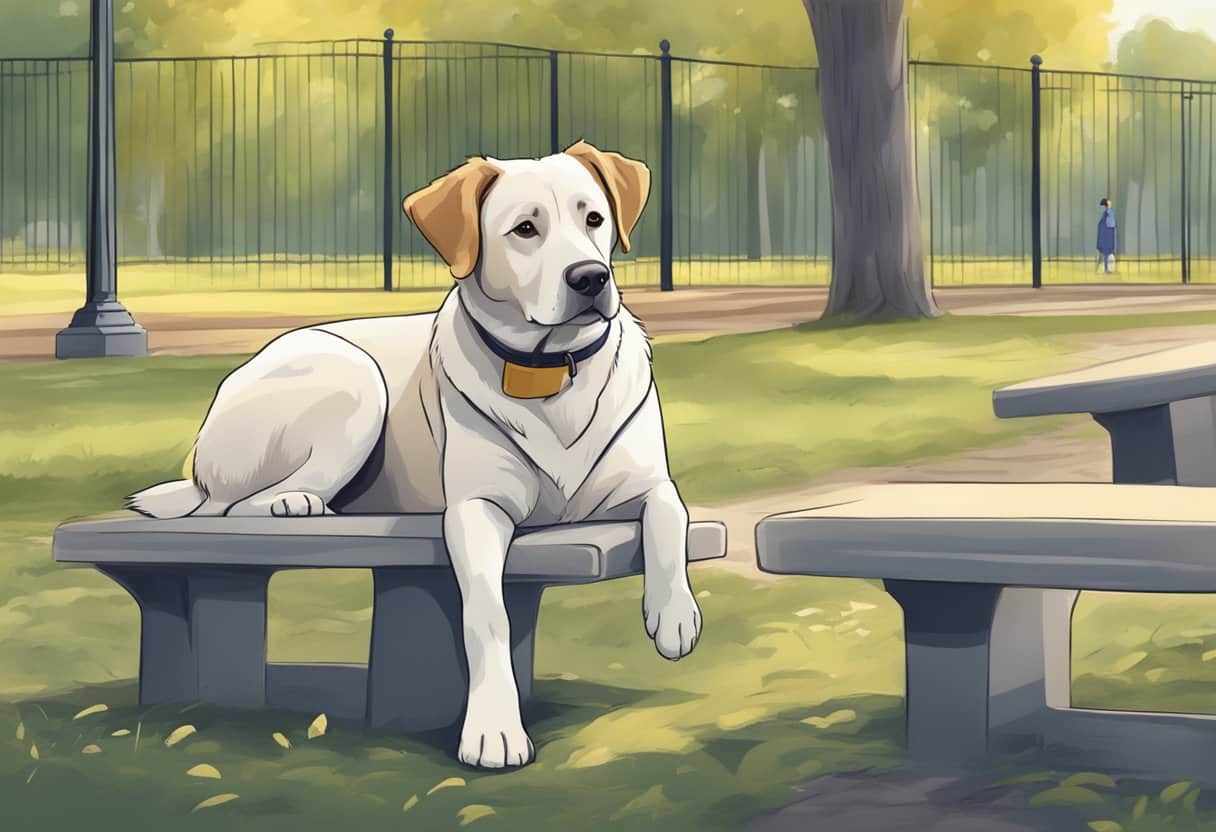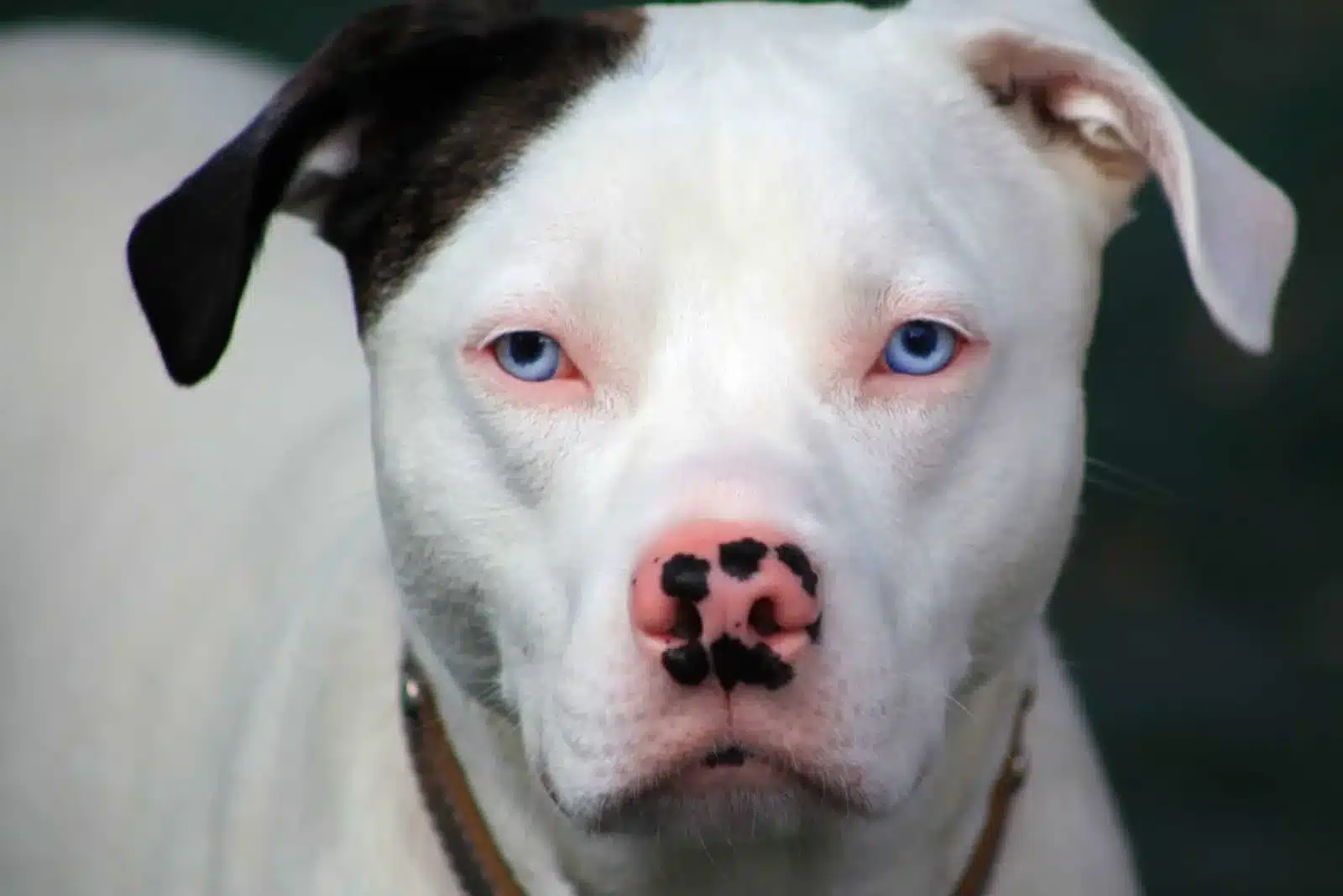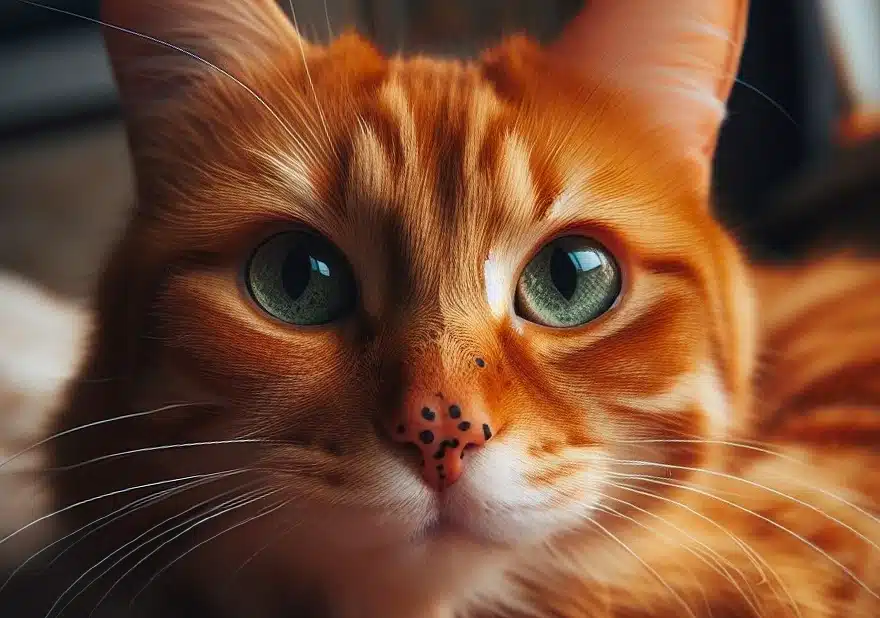Introverted Dogs Explained: Ultimate Guide to Shy Canine Behavior
Ads Disclosure ?

An introverted dog often exhibits behaviors that seem shy or reserved compared to their more extroverted counterparts. These dogs may display a range of mannerisms that include avoiding eye contact, licking their lips, or hiding in the presence of strangers or in overwhelming situations. It’s important to acknowledge that a dog’s temperament can be influenced by a combination of genetics and life experiences, and introversion is just one facet of a canine’s complex personality.
Understanding and recognizing the signs of an introverted dog can be vital in providing them with a comfortable and stress-free environment. For an introverted dog to become more confident, owners may need to implement specific strategies tailored to their dog’s unique needs. These strategies are not a one-size-fits-all solution but rather a thoughtful approach to fostering a sense of safety and building trust with the animal.
When fostering an introverted dog’s social confidence, respecting their comfort levels is crucial while gently introducing new experiences. Building confidence in a dog doesn’t happen overnight, and the journey requires patience and consistency. There are resources and techniques available to help introverted dogs feel more secure, ranging from controlled socialization exercises to creating a calm home environment that caters to their need for quiet spaces.
Jump To Section
Understanding Introverted Dogs
Introverted dogs exhibit distinct behavior patterns that set them apart from their extroverted counterparts, demonstrating a range of temperaments influenced by genetics and life experiences.
Can Dogs Be Introverted?
Dogs, like humans, may have personalities that lean toward introversion. While some may believe all dogs are naturally outgoing and sociable, a segment exhibits traits associated with introversion, such as being reserved or timid.
Characterizing Introversion in Canines
Introverted dogs often display a temperament that includes a tendency to be withdrawn, particularly in new or busy environments. Shyness is a discernible attribute where they may refrain from interaction, unlike their more confident peers. Additionally, these canines might seek solitude as a response to overwhelming social situations.
Introverts Vs. Extroverts in Dogs
In comparing introverts and extroverts in canines, introverted dogs may show less interest in social engagements and have less aggressive behaviors than extroverted dogs. Conversely, extroverted dogs are often the life of the party, engaging actively with their environment and enjoying the company of humans and other dogs alike.
The Role of Genetics and Life Experiences
The behavior of introverted dogs can be shaped by not only their genetics but also their life experiences. It’s important to recognize the value of positive reinforcement training and early socialization to foster a sense of security and confidence in dogs who exhibit signs of introversion.

Recognizing Introverted Dog Behaviors
Identifying an introverted dog involves observing their unique body language and interaction patterns. These dogs may exhibit behaviors that are less outgoing or hesitant compared to their extroverted counterparts.
Body Language Indicators
- Withdrawn Posture: Introverted dogs often have a low, subdued body posture. They may avoid eye contact, cower, or hide when feeling overwhelmed.
- Subtle Signs of Stress: Look for signs such as lip licking, yawning, or ears pinned back. These behaviors can indicate a desire for space or discomfort in certain situations.
Interaction Patterns
- Preference for Solitude: An introverted dog may prefer quiet, secluded spaces over busy, social environments.
- Aloofness with Strangers: They might seem aloof or indifferent when approached by unfamiliar people or animals, often keeping their distance.
By understanding these behaviors, one can foster a more supportive environment to gently build the dog’s confidence without causing additional stress.
Introverted Dog Breeds
Dog Breeds That Are Typically Introverted
Chihuahua: Often preferring a single companion, Chihuahuas can be the perfect size for cozy homes.
Basenji: Known for being quiet, the Basenji is an independent breed that respects personal space.
Shiba Inu: This breed is dignified and aloof, mirroring the reflective nature of an introvert.
Basset Hound: With their laid-back attitude, Basset Hounds require minimal exercise.
Irish Wolfhound: Gentle giants, they bond deeply yet are comfortable with quiet times.
Breed-Specific Temperaments
- Greyhound: Renowned for their calm temperament, Greyhounds are loving companions who enjoy relaxing by their owner’s side. They need moderate exercise but are quite content being couch potatoes.
- Pug: Their sociable nature and desire for human company make Pugs a great match for those who enjoy peaceful companionship without feeling overwhelmed.
- Maltese: They are affectionate and thrive in serene environments, which aligns well with introverted settings.
- Newfoundland: Despite their size, Newfoundlands are known for their sweet temperament and loyalty without demanding constant attention.
- Cavalier King Charles Spaniel: This breed’s adaptable nature makes them comfortable with both active and relaxed lifestyles.
- Great Dane: They are surprisingly gentle and easygoing for their size, often referred to as “gentle giants.”
- German Shepherd: While they can be active, they also possess an even temperament that can suit quieter atmospheres when properly trained.

Effective Training Approaches
Training an introverted dog requires techniques that not only enhance skills but also build confidence. The use of positive reinforcement and trust-establishing methods are fundamental to their progress.
Positive Reinforcement Strategies
Positive reinforcement training is pivotal in helping introverted dogs learn effectively. By rewarding desirable behaviors with treats or praise, they associate these actions with positive outcomes. A simple principle is at play: reward what you want to see more of. For example, when a dog sits on cue, they receive a treat, reinforcing that sitting when asked is beneficial for them. Extensive research, such as a study published in the National Library of Medicine, indicates that reward-based methods can be more effective and efficient compared to aversive techniques.
Building Trust and Confidence
To build trust and confidence in introverted dogs, a gradual and consistent approach is essential. Trust is fostered through gentle guidance and predictability. One way to establish this is by setting a routine for training sessions that the dog can become accustomed to. Each small step the dog takes should be acknowledged and celebrated to bolster their confidence. Consistency in training and in the trainer’s responses facilitates a secure learning environment. Dogs become more willing to engage when they trust their handler and understand that their environment is safe. Guidance on supporting introverted dogs is available on platforms such as PetMD which elaborate on strategies to help these dogs become more confident. Through ongoing positive interactions, they learn to navigate the world with greater assurance.
Socialization and Companionship
For an introverted dog, mastering social skills is essential while maintaining a comfortable level of independence. Finding the right balance between social interaction and solitude allows these dogs to thrive without the stress of overwhelming stimuli.
Improving Social Skills
Improving an introverted dog’s social skills involves gradual exposure to new environments and other dogs. Regular, brief visits to a dog park can enhance their comfort in social scenarios. Owners should observe their dog’s reactions closely—encouraging positive interactions while being mindful not to force engagement. A dog’s body language, such as reluctance or aloofness, often indicates their readiness for interaction; they should never be pushed beyond their comfort zone.
Finding the Right Balance
Companionship is crucial for introverted dogs, but unlike their extroverted counterparts, they often prefer one-on-one interaction over group settings. Introverted dogs value a peaceful coexistence with their human companions, reflecting the preferences of introverted people who typically seek quality time over quantity. Balancing time at crowded venues like dog parks with quiet activities, such as solo walks or playtime at home, satisfies their need for companionship while respecting their independence. Engaging in activities that avoid overstimulation ensures an introverted dog’s well-being and helps foster a secure, trusting relationship.
Caring for an Introverted Dog
Introverted dogs typically treasure tranquility and may require tailored approaches to help foster their confidence and comfort. An understanding of their reserved nature can be crucial in creating a supportive environment and routine.

Daily Routines and Environment
He or she should establish a daily routine that respects the dog’s need for a calm atmosphere. This includes predictable meal times, walks, and quiet time. The environment should have a designated safe space, such as a cozy bed or a quiet room where the dog can retreat when overwhelmed. Consistent scheduling reinforces a secure and reassuring environment for introverted canines, which can be vital in maintaining their emotional balance.
- Meals: At the same times every day.
- Walks: Regular, yet peaceful walks avoiding overly crowded places.
- Quiet Time: Scheduled periods of minimal disturbance.
Health and Well-Being
Their health and well-being are deeply connected to their mental state. Owners should observe their pet’s temperament for signs of stress or discomfort. Positive reinforcement training is essential in building trust and promoting independence. This practice encourages the dog’s confidence without forcing it into uncomfortable situations. Regular check-ups with a vet who understands their personality can help detect any issues early on and ensure the dog’s health is attended to in a manner that aligns with their temperament.
- Temperament Observation: Regular monitoring for any changes or signs of stress.
- Training: Using positive reinforcement to build trust and aid in confidence.
- Vet Visits: Regular, stress-minimized check-ups with a temperament-aware veterinarian.
Introverted Dogs in Special Situations
Introverted dogs may respond differently to certain stimuli compared to their more extroverted counterparts. Their temperament can influence their adaptability and the nature of their relationships with both humans and other canines.
Rescue Dogs and Adoption
Rescue dogs often carry past experiences that shape their behavior. When an introverted dog arrives at a new home, it may require a period of adjustment to build confidence and independence. Introverted canines might take longer to warm up and may need a more patient approach to help them adapt. Prospective adopters should provide a calm environment and allow the dog to approach them at their own pace—forcing interactions can be counterproductive.
Canine to Human Relationships
The bond between an introverted dog and a human can be particularly nuanced. Introverted humans may find companionship with an introverted canine because they may share similar comfort levels regarding socialization and personal space. Maintaining a stable routine and offering gentle encouragement can tremendously boost a dog’s self-assuredness. Additionally, it’s essential to respect their need for solitude at times. In doing so, a meaningful and understanding relationship can be fostered between the dog and its human companions.

Frequently Asked Questions
What are some common traits of an introverted dog?
Traits of introverted dogs may include a preference for solitude, less frequent vocalizations, and reserved behavior in new environments or around unfamiliar people.
How can you support an introverted dog in social situations?
To support an introverted dog in social settings, one should gradually expose them to new situations, provide them with a safe retreat, and offer reassurance and rewards for calm social interactions.
What are the best practices for caring for a dog with an introverted personality?
Best practices for caring for an introverted dog include offering a consistent routine, respecting their space, and engaging in gentle play that does not overwhelm them.
Are certain breeds more inclined to introversion than others?
Yes, some breeds have tendencies toward introversion, however, personality can vary widely within a breed and is influenced by individual temperament and life experiences.
How can you distinguish between a shy dog and an introverted one?
A shy dog typically exhibits anxiety or fearfulness in new situations, while an introverted dog may simply prefer calm and familiarity without showing signs of distress.
What kind of environment is most suitable for an introverted dog?
An ideal environment for an introverted dog is a calm and stable home, with access to quiet spaces where the dog can retreat and feel secure when needed.









